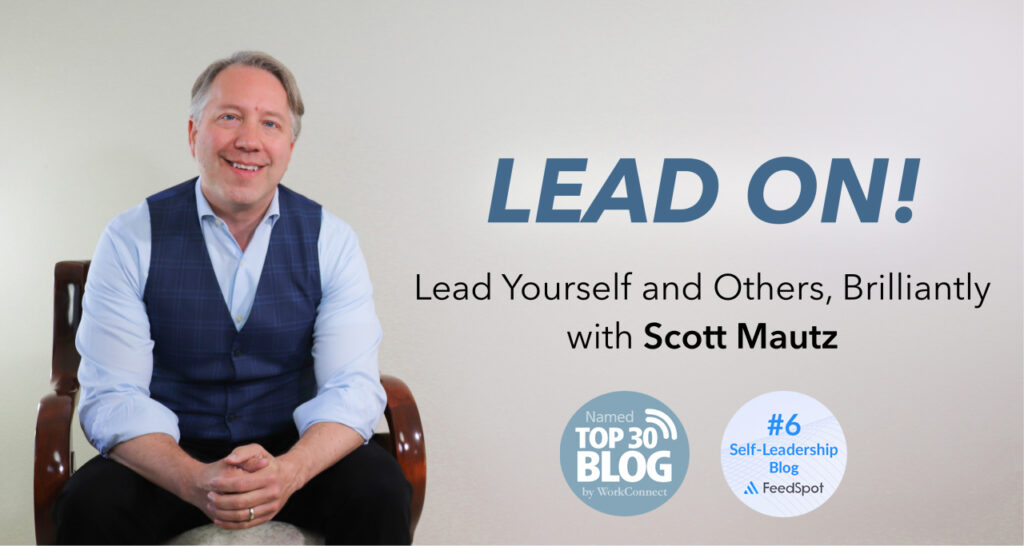
INSIGHTS (on leadership/self-leadership)
Few things are harder in the world of work (and maybe, in life) than getting people to change in the way you need them to. In fact, I teach days-long classes on leading change. Let me share one critical truth of change I share in those sessions.
People change when they see the light and feel the heat.
Meaning, you first have to provide a compelling change vision, an exciting new state that they can move to, different from the current State of the Union. If you’re lucky, the attractive vision for change you set is enough. But it likely won’t be. Which means you must couple that vision with accountability. Exactly what needs to change? By when? How will the change be measured? What rewards and/or consequences exist if they don’t change?
Yes, change leadership is first and foremost about having compassion for the emotional journey that change represents for people. It requires motivation and something to run to, not just clarity on what you’re running from. But it must be coupled with unswerving accountability, because, well, people.
IMPERFECTIONS (a recent mistake being made)
Many of you probably know I’ve been studying mental strength for a long time, culminating in my new book, The Mentally Strong Leader. As I’ve been on tour discussing the book at many companies, and on an even greater number of podcasts, I’ve noticed an incorrect assumption people make about mental strength. I’ll clear it up, and pinpoint why it matters.
Mental strength is not the same thing as EQ (Emotional Intelligence) – which is getting your emotions to work for you vs. against you. It fits under the broader umbrella of mental strength, which is the ability to productively regulate not only your emotions, but your thoughts and behaviors too. Mental strength goes well beyond EQ, equating to the successful self-regulation of six core mental muscles: confidence, fortitude, boldness, decision-making, goal-focus, and messaging (staying positive-minded even in negativity).

EQ comes into play in some ways with some of these muscles, but, mental strength encompasses so much more. It’s how we lead ourselves, and others, to something exceptional, through something challenging. And in a world that’s producing more and more setbacks, distractions, and opportunities for self-doubt to arise, it has earned a unique distinction.
Mental strength is the leadership superpower of our times.
It’s what you’ll be hearing about for the next decade and beyond, like you’ve heard about EQ for the past decade. And you can be on the front edge of that movement, becoming mentally stronger, starting right now. Here’s a link to a free Mental Strength Self-Assessment to determine your overall mental strength score, and your score by “mental muscle.” It’s the starting point for building your own tailored, mental strength training regimen.
Your superpower awaits.
IMPLEMENTATION (one research-backed strategy, tip, or tool)
Here’s a simple trick, a mantra if you will, to help guide and drive whatever personal transformation you’re yearning for. Write it down. Repeat it to yourself. Out loud. Often. These six, deceivingly powerful, words:
See that thing. Be that thing.
Here’s an example of the power of this. When I first started keynoting professionally over a decade ago, I’d get many, many requests to speak about change management. I’d always been fascinated in the topic, and considered myself a lifelong student of it. But I wasn’t ready to speak to it with the robust level of expertise required to do right by my clients. Yet.
I saw that thing. The market pointing me to a clear need. So, what did I decide next?
Be that thing. And so I became it – as you might have surmised from the INSIGHTS section of this issue. I went to school on the study of change, getting real-world certifications, adding layer upon layer of knowledge, testing, implementing, and refining what I was learning at more companies than I can remember. Then I started getting asked to present on change management. Then to teach it. Then to become the creator of the Change Management Foundations course for LinkedIn Learning, then to be the reviewer for their Change Management certification program.
So, I ask you this. Do you clearly have that thing in sight for you? Have you identified it – the thing worth transforming into – that you must transform into? Do you know what you need to do to become that thing? Do you believe in yourself, that you can indeed be it?
I don’t mean to oversimplify the art of personal transformation. But I draw inspiration from announcer and former professional baseball player, Keith Hernandez, who famously boiled down the complexities of baseball to six words:
“See the ball. Hit the ball.”




Leave a Reply